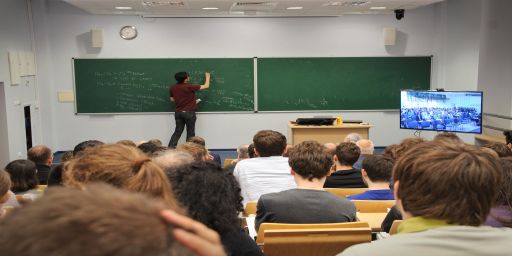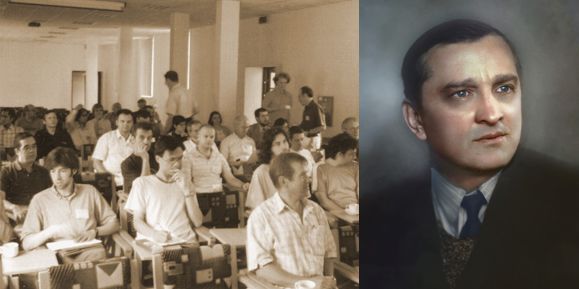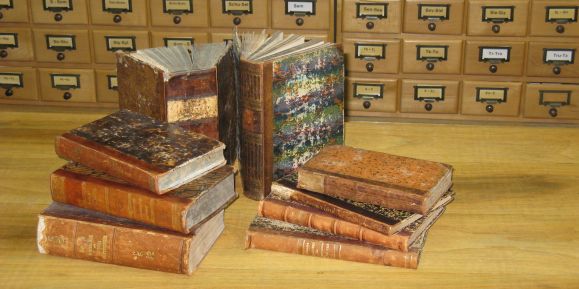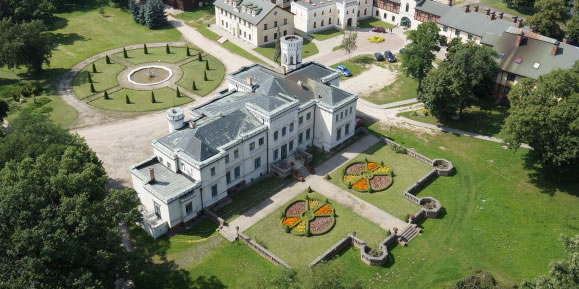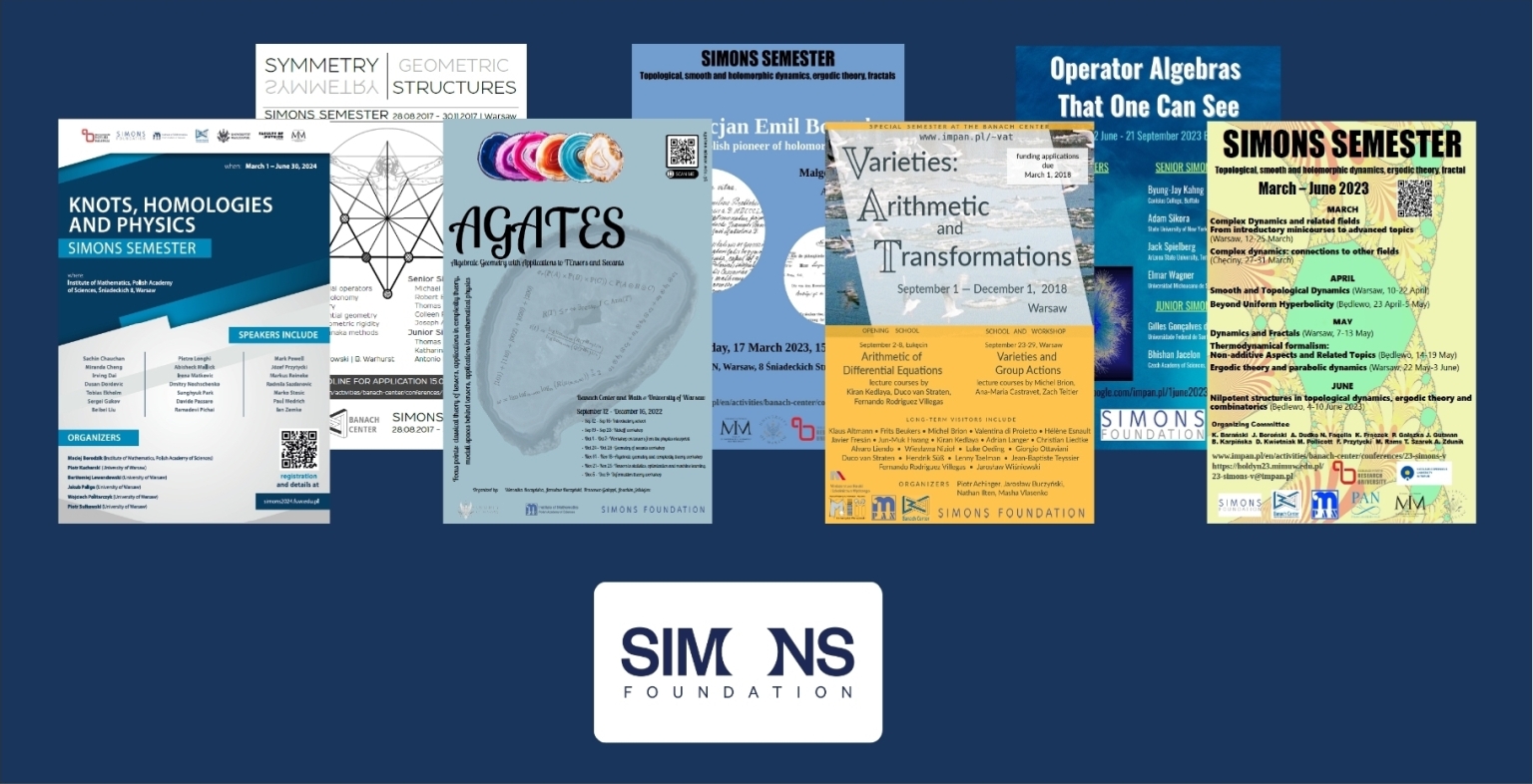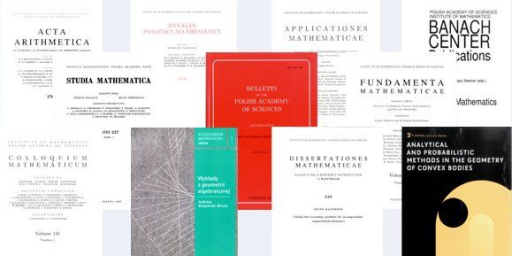Noncommutative geometry
ACADEMIC YEAR 2019/2020
Organisers: Piotr M. Hajac and Tomasz Maszczyk
Venue: Ul. Śniadeckich 8, room 321, Mondays
To see the video recording of a talk, click on its title.
21 October 2019, 10:30
Z/2Z-EXTENSIONS OF COMPACT MATRIX QUANTUM GROUPS
In 2009, Banica and Speicher introduced categories of partitions in order to study a class of compact matrix quantum groups and their representation categories. Later, it turned out that these structures are a valuable tool that can be used to construct new examples of quantum groups and better understand their structure. Categories of partitions, in the sense of the original definition of Banica and Speicher, were already classified. Nevertheless, many different generalizations of this concept were introduced, bringing new inputs and inspiration to the theory of compact matrix quantum groups. In the first part of the talk, we briefly introduce the theory of categories of partitions and describe some generalizations. Then we focus in more detail on a new result regarding construction of Z/2Z-extensions of compact matrix quantum groups, using so-called partitions with extra singletons. We introduce a series of new quantum group products interpolating the tensor product and the free product.
DANIEL GROMADA (Universität des Saarlandes, Saarbrücken)
21 October 2019, 14:00
EQUIVARIANT DIMENSIONS OF GRAPH C*-ALGEBRAS
We explore the recently introduced local-triviality dimensions by studying gauge actions on graph C*-algebras, as well as the restrictions of the gauge action to finite cyclic subgroups. For C*-algebras of finite acyclic graphs and finite cycles, we characterize the finiteness of these dimensions, and we further study the gauge actions on many examples of graph C*-algebras. These include the Toeplitz algebra, Cuntz algebras, and q-deformed spheres. (Based on joint work with A. Chirvasitu and B. Passer.)
MARIUSZ TOBOLSKI (IMPAN)
28 October 2019, 10:30
PODLEŚ SPHERES FOR THE BRAIDED QUANTUM SU(2)
The construction of "quantum spheres" was first accomplished by Podleś , starting with the quantum group SUq(2) for real q such that 0<|q|<1. Recently, a version of this quantum group was defined by Kasprzak, Meyer, Roy and Woronowicz for complex q satisfying 0<|q|<1. Here the crucial difference is that, if q is not real, the comultiplication takes values in the "braided tensor product" of the C*-algebra C(SUq(2)) with itself. I will discuss the result that, despite this difference, the quantum spheres in the braided case (q not real) are exactly the same as those found by Podleś for |q|.
PIOTR M. SOŁTAN (Uniwersytet Warszawski)
28 October 2019, 14:00
TOWARDS THE CLASSIFICATION OF LOCALLY TRIVIAL NONCOMMUTATIVE PRINCIPAL BUNDLES
A classical result from topology states that if X is a numerable principal G-bundle, then there exists a map from X/G to the classifying space BG, and all principal G-bundles isomorphic to X are classified by the homotopy class of this map. The aim of this talk is to find an analog of this result in noncommutative topology. First, we introduce the notion of a numerable noncommutative principal bundle in the setting of compact group actions on unital σ-C*-algebras. Then, for a compact group G, we define the unital σ-C*-algebra of functions on the noncommutative classifying space, and prove that it classifies all numerable noncommutative principal G-bundles. (Based on joint work with Alexandru Chirvasitu)
MARIUSZ TOBOLSKI (IMPAN)
4 November 2019, 10:30
RELATIVE DOUBLE COMMUTANTS IN CORONAS OF SEPARATABLE C*-ALGEBRAS
Given a subalgebra A of a C*-algebraic corona algebra, one can define a relative commutant. In several cases, it is known that the double relative commutant of A is A itself. We show that this holds true in a class of corona algebras for separable subalgebras A that are unital in a suitable sense. The class of corona algebras considered is the class of coronas of stable, separable, simple, nuclear C*-algebras. Separability is an essential condition, as shown by some counterexamples. (Joint work with Martin Mathieu, QUB.)
DAN KUCEROVSKY (University of New Brunswick, Fredericton)
4 November 2019, 14:00
FROM PUSHOUTS OF GRAPHS TO PULLBACKS OF GRAPH ALGEBRAS
We search for a new concept of graph morphism that would ensure that the assignment of graph algebras to graphs becomes a contravariant functor translating pushouts of graphs into pullbacks of graph algebras. The case of an injective morphism between row-finite graphs is solved by a known concept of admissible subgraph. The non-injective case is motivated by natural and highly non-trivial examples from noncommutative topology (e.g., quantum weighted projective spaces). To accommodate this naturally occurring non-injectivity, we replace the standard idea of mapping vertices to vertices and edges to edges by the more flexible idea of mapping finite paths to finite paths. (Based on joint works with Alexandru Chirvasitu, Sarah Reznikoff and Mariusz Tobolski.)
PIOTR M. HAJAC (IMPAN)
25 November 2019, 10:30
I will discuss the notion of a lattice in a locally compact quantum group that is meant to mimic its classical analogue. For locally compact groups, at least part of the interest stems from the fact that property (T) transfers between such groups and their lattices. I will discuss similar “permanence” properties for quantum lattices, as well as issues related to characterizing invariant measures on homogeneous spaces of locally compact quantum groups. (Joint with Michael Brannan and Ami Viselter.)
ALEXANDRU CHIRVASITU (SUNY, Buffalo, USA)
25 November 2019, 14:00
MANAGEABILITY OF MULTIPLICATIVE PARTIAL ISOMETRIES AND QUANTUM GROUPOIDS
It is known that in the theory of quantum groupoids of separable type (developed by the author and Van Daele), there arise certain multiplicative partial isometries that behave in a similar manner as the multiplicative unitaries (in the sense of Baaj-Skandalis) associated with a quantum group. In this talk, I will give and explain some algebraic conditions that axiomatically determine a multiplicative partial isometry W. Then we will also consider the manageability condition for W. Starting from the multiplicativity and the manageability, we can construct most of the quantum groupoid structure, including a C*-algebra A with a comultiplication Δ, base C*-algebras Bs and Bt, as well as the antipode map and its polar decomposition. Its dual quantum groupoid can be also constructed. We will then turn to exploring an ongoing project (with Woronowicz) concerning the partial isometries that are "adapted'' to our given manageable multiplicative unitary W.
BYUNG-JAY KAHNG (Canisius College / SUNY, Buffalo, USA)
9 December 2019, 10:30
GROMOV-HAUSDORFF CONVERGENCE FOR SOME C*-DYNAMICAL SYSTEMS
ABSTRACT: While developing a noncommutative analogue of the Gromov-Hausdorff distance for C*-algebras, we observed that, under some assumptions, our new metric interacts rather nicely with (semi)group actions. A natural way to capture this phenomenon is to introduce a covariant version of our Gromov-Hausdorff distance and prove a form of the Arzela-Ascoli theorem relating the covariant and the standard Gromov-Hausdorff convergence. Certain interesting issues arise regarding the completeness of the covariant Gromov-Hausdorff metric. We will discuss this topic, present some applications, and point out how this work is a component of our more recent work on the convergence for spectral triples.
FRÉDÉRIC LATRÉMOLIÈRE (University of Denver)
9 December 2019, 14:00
ALMOST COMMUTATIVE GEOMETRY OF THE STANDARD MODEL
A non-commutative C*-algebra is commonly regarded as the algebra of continuous functions on a 'quantum space'. Its smooth and metric structures can be described in terms of a spectral triple that involves an analogue of the Dirac operator. I will explain how the Standard Model of fundamental particles can be interpreted as the almost commutative geometry. The exterior part is the canonical spectral triple on a spin manifold, and the finite inner part is a quantum analogue of the de Rham-Hodge spectral triple.
LUDWIK DĄBROWSKI (SISSA, Trieste)
13 January 2020, 14:00
TWISTING AND UNTWISTING SPECTRAL TRIPLES
I will present the current status of research on spectral triples with twisted reality conditions. The talk will be especially focused on the relation between twisted spectral triples and spectral triples with a twisted first order condition. Based on joint works with T. Brzeziński, N. Ciccoli and L. Dąbrowski.
ANDRZEJ SITARZ (Uniwersytet Jagielloński)

